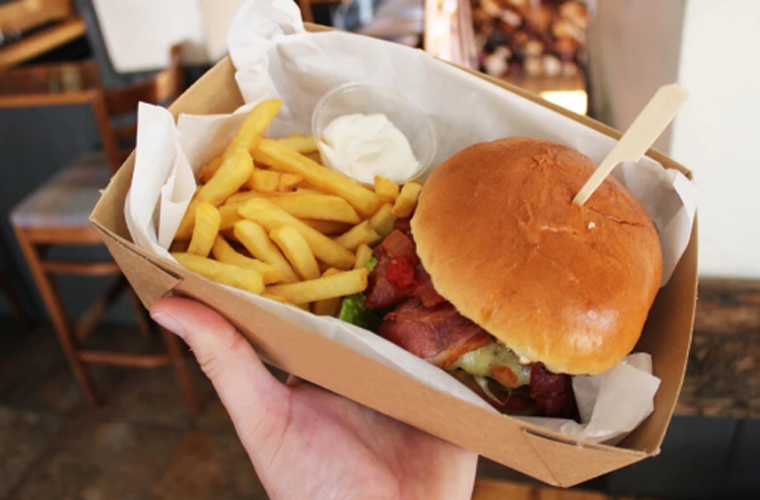- Introduction: Understanding Parchment and Baking Paper
- Technical Superiority and Material Advantages
- Market Data and Industry Trends
- Manufacturer Comparison: Key Features and Differentiators
- Customization Solutions for Diverse Baking Needs
- Application Cases: From Bakeries to Home Kitchens
- Conclusion: The Strategic Value of Parchment and Baking Paper

(parchment and baking paper)
Introduction: Understanding Parchment and Baking Paper
Parchment and baking paper are essential tools in both commercial and domestic kitchens, driving modern baking efficiency and product quality. This blog delves into their unique properties, different types—including parchment greaseproof paper and Paper Baking Moulds—and explores how they have revolutionized baking practices worldwide. As demand for convenient, non-stick, and heat-resistant solutions grows, selecting the right paper can profoundly impact food production, hygiene, and presentation. Recognizing the variations among available products is key to meeting the evolving needs of bakers, pastry chefs, and food manufacturers.
Technical Superiority and Material Advantages
The evolution and enhancement of parchment and baking paper
are rooted in technological advancements. Modern parchment greaseproof papers are manufactured by treating cellulose-based paper with sulphuric acid or zinc chloride to increase density, making them impermeable to oil, moisture, and heat. Their heat resistance typically ranges from 220°C to 260°C (428°F to 500°F), allowing repeated use in high-temperature ovens without degrading or leaching substances.
In contrast, traditional waxed paper loses structural integrity under heat and may transfer off-flavors to baked goods. Contemporary Paper Baking Moulds, crafted from specialty baking-grade paper, provide excellent dimensional stability, ensuring even cooking and clean release. The adoption of silicone-coated parchment raises standard non-stick performance, reducing the need for added fats and minimizing cleaning effort. Moreover, food safety certifications—such as FDA and EU compliance for materials in contact with food—guarantee consumer well-being.
Market Data and Industry Trends
The global market for parchment and baking paper is rapidly expanding, propelled by increased at-home baking and the rising commercial demand for eco-friendly disposable products. According to a 2023 market report, the global food-grade paper market was valued at approximately USD 5.6 billion, with a projected compound annual growth rate (CAGR) of 6.3% through 2028. Parchment and baking paper segments dominate, accounting for nearly 46% of total sales.
In Europe, 68% of professional bakers and patisseries prefer parchment greaseproof paper due to its compliance with strict food safety regulations, while in North America, the market has seen a 24% increase in sales of pre-cut and custom-sized papers, reflecting the demand for workflow efficiency. Sustainable sourcing is a prime driver: 73% of bakeries surveyed in 2022 expressed a preference for Forest Stewardship Council (FSC) certified materials, a fact that has influenced several suppliers to transition to eco-labeled lines. The following table summarizes recent market findings:
| Region | Market Share (%) | Preferred Product | Key Buying Factor | Primary Certification |
|---|---|---|---|---|
| Europe | 46 | Parchment Greaseproof Paper | Food Safety Compliance | EU 1935/2004 |
| North America | 32 | Custom Parchment Sheets | Convenience and Sizing | FDA |
| Asia-Pacific | 17 | Baking Moulds | Heat Resistance | ISO 22000 |
| Other Regions | 5 | Greaseproof Paper Rolls | Cost Efficiency | Local Food Law |
Manufacturer Comparison: Key Features and Differentiators
Differentiating among global manufacturers can be challenging, given the tight competition in quality, pricing, and sustainability commitments. To illustrate, consider the following comparison of leading parchment and baking paper suppliers, emphasizing features that matter most to industrial and retail clients:
| Manufacturer | Product Range | Non-stick Coating | Custom Sizes | Sustainability | Certifications |
|---|---|---|---|---|---|
| Company A (Europe) | Parchment Paper, Baking Moulds, Greaseproof Sheets | Silicone (Dual Side) | Yes | FSC-certified, Biodegradable | EU, BRC, ISO 9001 |
| Company B (USA) | Parchment Rolls, Pre-cut Sheets | Single Silicone | Limited | Chlorine-free, Recyclable | FDA, Kosher |
| Company C (Asia-Pacific) | Baking Paper, Cake Cups, Paper Baking Moulds | Vegetable-based | Yes | Renewable Pulp | ISO 22000, SGS |
This comparison reveals the increasing focus on dual-side silicone coatings, which provide superior non-stick qualities, and on custom size offerings for large-scale bakeries. Furthermore, certifications and eco-labels are becoming non-negotiable for discerning buyers, especially in the EU and US markets.
Customization Solutions for Diverse Baking Needs
The demand for bespoke parchment and baking paper solutions is at an all-time high. Customization allows bakeries, food producers, and even home chefs to optimize both production and presentation. Options range from tailored sheet sizes and roll lengths—designed to fit automatic baking lines or specific tray dimensions—to custom-printed papers for branding or allergen labeling.
Other innovations include pre-folded or die-cut bakeware, such as paper baking moulds, which eliminate the need for metallic or silicone forms. High-end bakeries now request dual-density options, providing extra rigidity for delicate pastries or thick cakes. For example, waffle-textured parchment improves air circulation and browning, while specialty greaseproof paper resists both oil and strong spices in savory applications.
Laboratories serving food R&D regularly require small-batch, specialty parchment with unique coatings, colors, or perforation patterns. These customizations not only enhance product performance but also empower bakers with creative, functional tools tailored to their signature products.
Application Cases: From Bakeries to Home Kitchens
The utility of parchment and baking paper extends across a spectrum of commercial, industrial, and residential enterprises. Commercial bakeries leverage continuous parchment rolls for bread and pastry production, reducing sticking and improving oven turnaround. In 2023, a leading European patisserie reported a 31% increase in production efficiency and a 17% decrease in cleaning outages after switching to dual-coated parchment sheets.
Food manufacturers rely on industrial parchment and greaseproof paper to line automated depositors, protecting machinery while ensuring perfect product shapes. The adoption of custom-branded Paper Baking Moulds is rapidly increasing among cupcake and muffin manufacturers; one US-based facility reduced waste by 22% and improved end-product appearance by switching from silicone trays to custom paper forms.
At the household level, home bakers value parchment and baking paper for its ability to simplify cleanup and guarantee consistent results for cookies, meringues, and roasted vegetables. In a 2022 market survey, 83% of frequent home bakers reported improved outcomes in both taste and appearance when using quality parchment over generic alternatives.
Conclusion: The Strategic Value of Parchment and Baking Paper
In sum, parchment and baking paper are more than simple kitchen accessories; they represent vital components in the pursuit of quality, efficiency, safety, and sustainability across the baking industry. With strategic customization, thoughtful manufacturer selection, and adherence to the latest market trends, businesses can secure a tangible competitive advantage, while consumers enjoy superior baking experiences—from the first batter to the final golden crust.

(parchment and baking paper)



